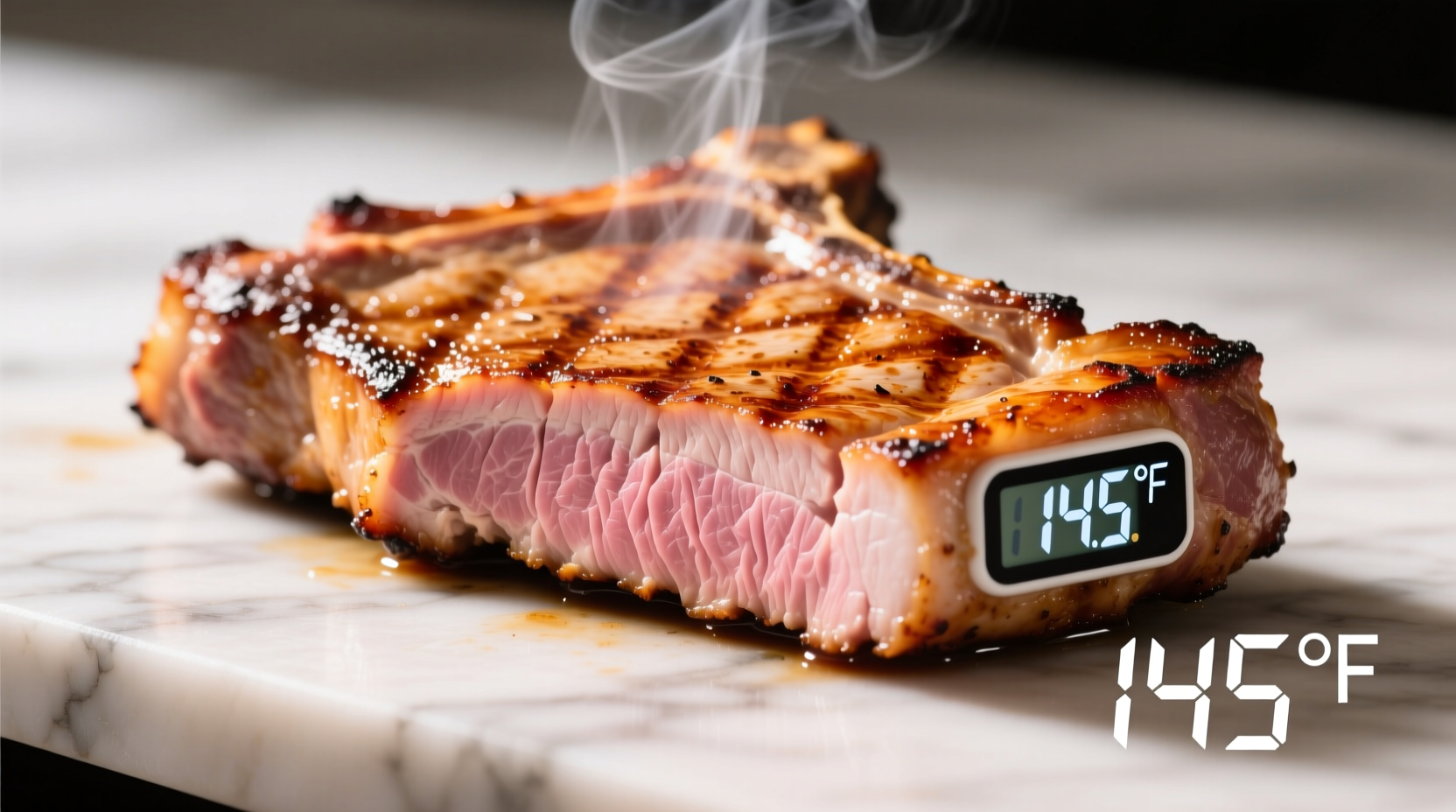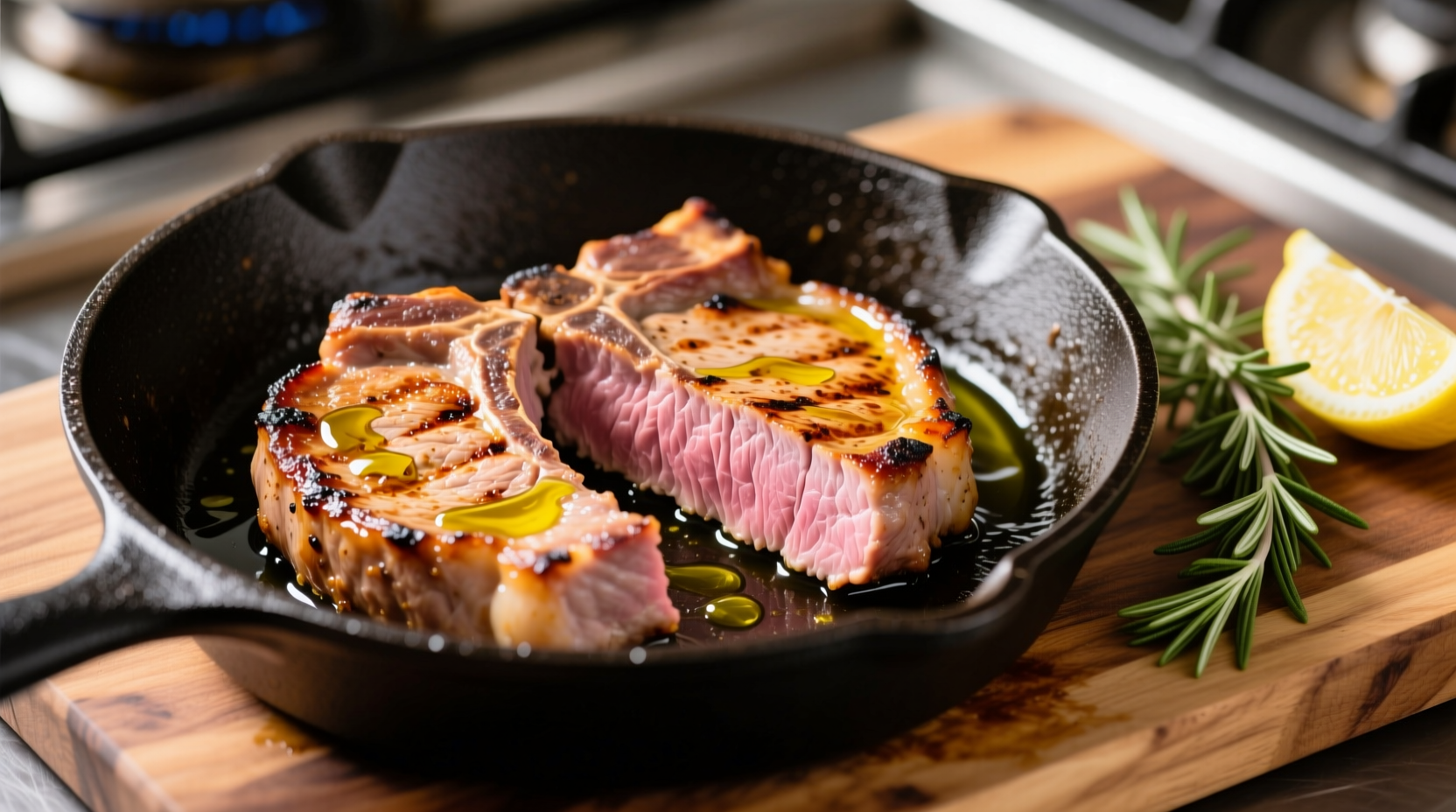Discover exactly how to achieve restaurant-quality pork chops every time with this science-backed guide. Whether you're using a cast-iron skillet, grill, or oven, understanding precise temperature control transforms this often-mistreated cut from dry disappointment to succulent perfection. We'll walk through the critical temperature thresholds, visual indicators, and professional techniques that guarantee safe, flavorful results.
The Science Behind Pork Chop Temperatures
Gone are the days of overcooked, leathery pork chops. Modern food safety research has revolutionized our understanding of safe pork preparation. The USDA's current recommendation of 145°F represents a significant shift from previous guidelines, reflecting advancements in food science and pathogen research.
Evolution of Pork Safety Standards
Understanding how recommendations have changed provides crucial context for today's cooking practices:
- Pre-1980s: No standardized temperature guidelines existed
- 1980s-2011: USDA recommended 160°F (71°C) to eliminate trichinosis concerns
- 2011: USDA lowered recommendation to 145°F (63°C) with 3-minute rest based on improved farming practices and pathogen research
- Present: 145°F remains the gold standard, supported by FSIS and American Meat Science Association
This evolution reflects improved pork production methods and more precise understanding of pathogen elimination temperatures. Trichinella spiralis, the parasite historically associated with undercooked pork, is now extremely rare in commercially raised pigs due to regulated feeding practices.
Why Temperature Accuracy Matters
Using an instant-read thermometer isn't just recommended—it's essential for perfect pork chops. Visual cues alone can't reliably indicate doneness, as factors like meat color, cooking method, and even lighting conditions create misleading appearances.
| Temperature | Doneness Level | Texture & Appearance | Food Safety Status |
|---|---|---|---|
| 120-125°F (49-52°C) | Rare | Bright pink center, very juicy | Not recommended for pork |
| 130-135°F (54-57°C) | Medium-rare | Pink center, moist texture | Acceptable with proper rest time |
| 145°F (63°C) | Medium | Faint pink center, juicy | USDA safe minimum |
| 150-155°F (66-68°C) | Medium-well | Slightly pink, beginning to dry | Safe but less optimal |
| 160°F+ (71°C+) | Well-done | No pink, often dry and tough | Safe but overcooked |
The critical 145°F threshold destroys harmful bacteria like Salmonella and E. coli while preserving moisture. During the mandatory 3-minute rest period, residual heat continues cooking the meat (carryover cooking), raising the internal temperature 5-10°F while allowing juices to redistribute.
Step-by-Step Cooking Guide
Follow these professional techniques for perfectly cooked pork chops regardless of your cooking method:
Preparation Essentials
- Choose chops at least 1-inch thick for better temperature control
- Bring meat to room temperature (30-60 minutes) before cooking
- Dry the surface thoroughly with paper towels
- Season generously with salt 45 minutes before cooking
Cooking Method Comparison
Different cooking methods require slight temperature adjustments due to heat distribution variations:
- Pan-searing: Heat oil to shimmering (375°F), cook 3-4 minutes per side. Insert thermometer horizontally into thickest part.
- Grilling: Use two-zone fire. Sear over direct heat, finish over indirect until reaching 140°F, then rest to 145°F.
- Oven-finishing: Sear in skillet, transfer to 400°F oven until reaching 140°F internally.
Avoiding Common Temperature Mistakes
Even experienced cooks make these critical errors that compromise safety and quality:
Scenario Limitations to Consider
Certain situations require special attention to temperature management:
- Thin chops (under ¾ inch): Reach target temperature too quickly—use lower heat and check early
- Bone-in vs. boneless: Bone conducts heat differently—measure near the bone and center
- Marinated meats: Acidic components can affect texture—don't overcook to compensate
- Smoked chops: Low-and-slow methods require different temperature protocols
Professional chefs emphasize thermometer placement technique: insert horizontally through the side of the chop to measure the absolute center, avoiding bone or fat pockets. Digital probe thermometers provide the most accurate readings, with readings stabilizing in 2-3 seconds.
The Resting Imperative
Never skip the 3-minute rest period after reaching 145°F. This critical step allows:
- Proteins to relax, retaining maximum juices
- Carryover cooking to complete the process
- Temperature equalization throughout the chop
- Flavor development as juices redistribute
Cover loosely with foil during resting—tight wrapping causes steaming that degrades crust quality. The internal temperature will typically rise 5-10°F during this period, reaching the ideal 150°F sweet spot for optimal texture.

Troubleshooting Temperature Issues
When problems arise, these solutions address common temperature challenges:
- Chops cooking too fast: Reduce heat immediately and move to cooler part of cooking surface
- Uneven cooking: Rotate chops 180 degrees halfway through cooking for even heat exposure
- Temperature stall: Common with thicker cuts—maintain consistent heat without increasing temperature
- Overcooked exterior: Next time start with cooler cooking surface and monitor more frequently
Remember that carryover cooking continues even after removal from heat. For best results, remove chops from heat when they reach 140°F, allowing them to coast to the target 145°F during resting. This prevents overshooting the ideal temperature range.
Food Safety Verification
The USDA Food Safety and Inspection Service confirms these standards through rigorous testing. Their research demonstrates that pork cooked to 145°F with a 3-minute rest achieves a 6.8 log10 reduction in Salmonella—well beyond the required 5 log10 reduction for food safety. This scientific validation makes the 145°F standard both safe and optimal for quality.
FAQs About Pork Chop Temperatures
- Can I cook pork chops to medium-rare?
- Why did my pork chop turn gray at 145°F?
- Do I need to cook bone-in pork chops longer?
- How do I check temperature without a thermometer?
- What happens if I don't rest pork chops?











 浙公网安备
33010002000092号
浙公网安备
33010002000092号 浙B2-20120091-4
浙B2-20120091-4